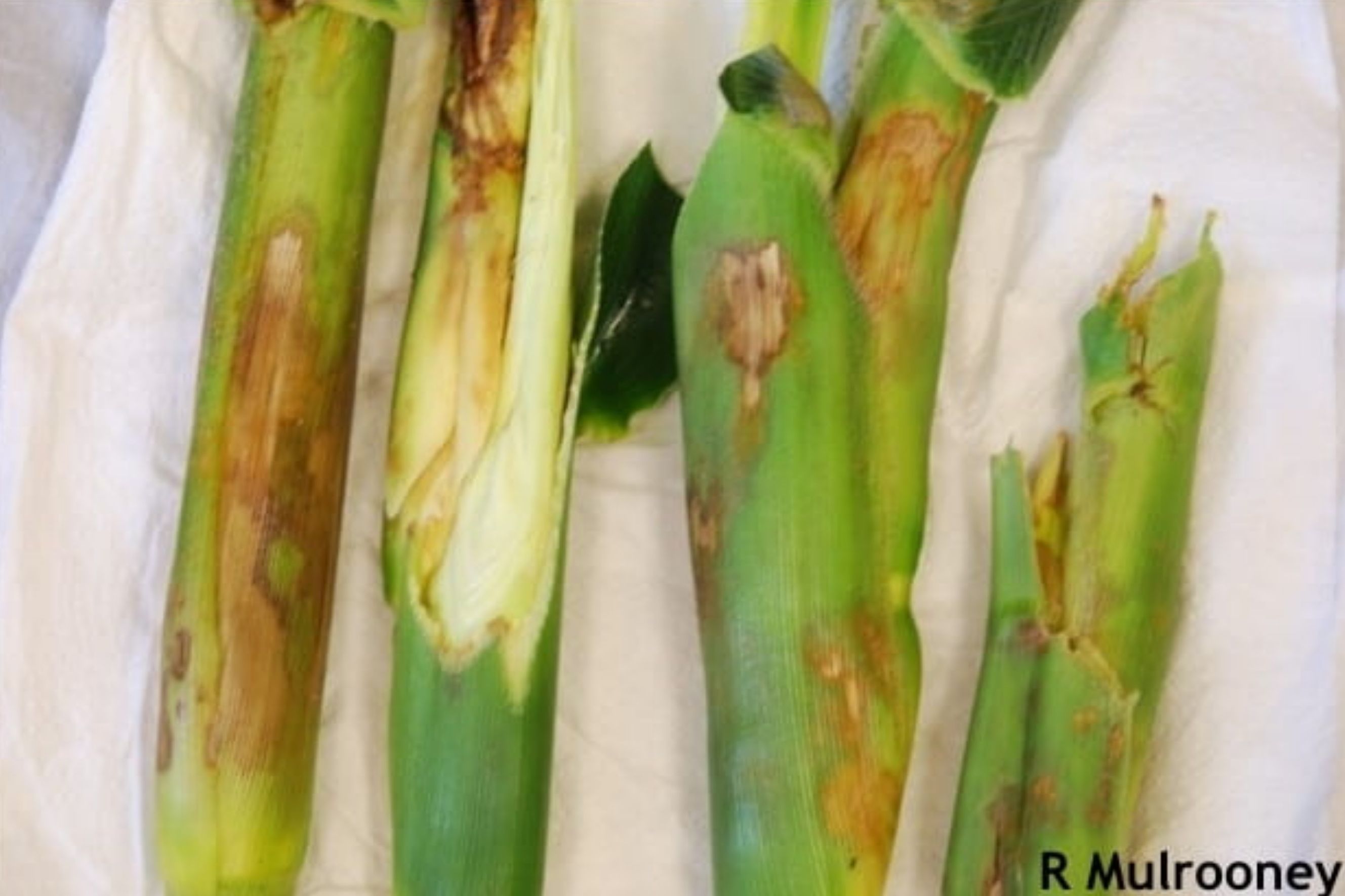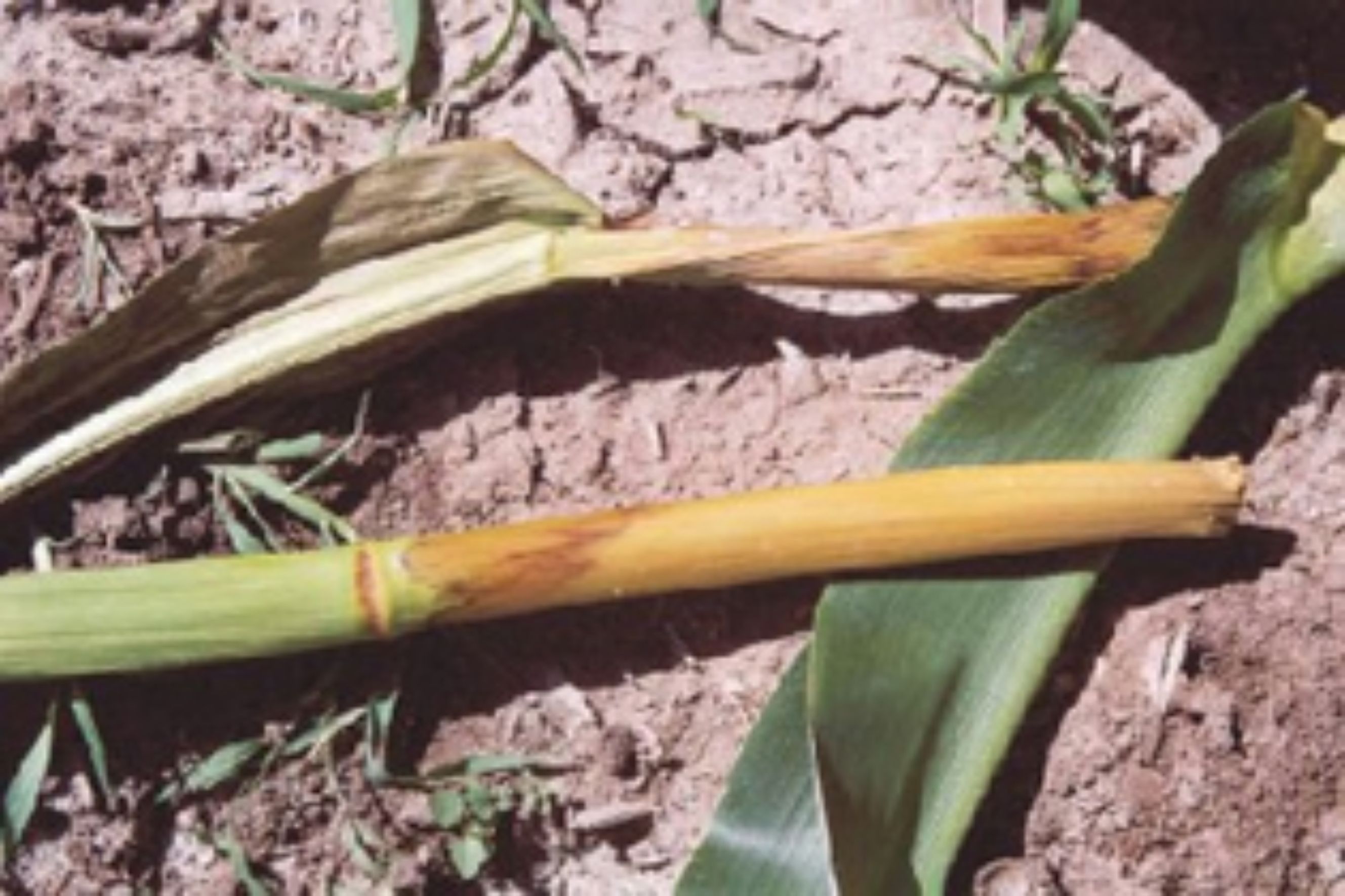Bacterial Stalk Rot
HOSTS
- Corn
- Other strains of Pectobacterium carotovorum can cause soft rot on other vegetable
BIOLOGY
Bacterial stalk rot (Pectobacterium carotovorum) is a concern when irrigation water is pumped from a lake, pond, or slow-moving stream. This can contribute to infections, especially during periods of heat and high humidity.
Infections occur during high temperatures (90°F and above) and high relative humidity and when free moisture is present, such as from rain or overhead irrigation
SYMPTOMS
Initially, leaf sheaths on corn and stalk nodes become discolored, followed by decay. Infected tissue emits a foul odor and the top of the plant lodges or can be easily removed.
Onion and potato: soft rot occurs causing infected tissues to dissolve, emit a foul odor, and ooze liquid from wounds. Potato tissue can turn black.
GENERAL MANAGEMENT
Bacterial stalk rot is relatively rare in Utah. There is no cure for infected plants, so prevention is key.
- Examine corn after extended periods of flooding during high temperatures and high humidity.
- Target fields where infections have occurred in the past.
- Look for blotchy brown lesions on stalks, especially near the base.
- Avoid wounding potato tubers or onions.
- Plow corn debris deep into the ground.
- Avoid using surface water for irrigation (flooding or overhead).



